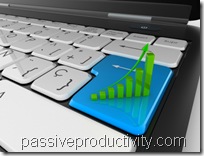Most people have heard that we only use about 5-10% of our brain capacity.
Actually, like the quote about money being the root of all evil, it’s a misquote – we only use 5-10% at any one time, but anyway…
 It resonates with most of us because we know that we have more potential that’s not being used or even uncovered, with our day to day lives being so taken up by little details.
It resonates with most of us because we know that we have more potential that’s not being used or even uncovered, with our day to day lives being so taken up by little details.
What nobody seems to realise, though, is that when it comes to productivity at work, it’s not just us and our brains that hold hidden untapped potential.
When was the last time you went hunting for a way to do something new in the software you use every day? Have you ever had someone use a shortcut and thought ‘how many hours would I have saved if I only knew about that x weeks/months/years ago’?
Technology is a tool meant to make us more productive, but the vast majority of users never actually go beyond learning the basic functions that they know they need to use, never explore the tricks that make things go faster, and most especially never search for new ways to make the computer, tablet, smart-phone, or [insert whatever gadget you like here] take up more of their workload, and free up more of their time.
That’s my specialty.
As an example, Microsoft Office (which as of 2010 owned 94% of the market) not only has more features and commands than even most of the programmers who worked on it know about, but did you know it also has a back-end programming language (Visual Basic for Applications, or VBA) that lets you, essentially, train it to do pretty much anything you ask of it – at the push of a button. Automatically.
There’s a scaled down version (works for a lot of things, but not everything) called ‘Macros’ – that records a sequence of actions you want to repeat, and creates a VBA routine for you. Using macros is a fast and easy way to start automating the time-consuming repetitive work that eats into your day on an ongoing basis – and freeing yourself up to do more interesting things! Taking it to the next level and learning a bit of VBA, for example, I was able to take a weekly report that regularly took me from Monday morning til Tuesday afternoon (and I’m pretty fast on Excel! It involved processing raw data in a text file, importing and cleaning certain columns, manipulating the data, charting and finally analysing it into a summary report) and turn it into a push button spreadsheet that I could run while I got my coffee first thing Monday morning. Ten minutes later, it was done. A day and a half extra every week. Of course writing the program took a lot longer initially, but it more than paid that back in time over the years I used it.
Making your computer work harder doesn’t have to involve learning about programming, though. Sometimes, it’s the small things that can really add up.
- Do you use a lot of Windows applications and spend time switching between them? Try holding down the Alt key and pressing tab, it cycles through all your applications and will activate whichever one you let go of the keys on.
- Spend a lot of time closing windows to get back to a desktop shortcut? The funny little flag icon between Ctrl and Alt is called a Win-key. Hold that down and press D to get straight to your desktop. Hold it down with an E and you get an Explorer (My Computer) window.
- Are you supposed to hit Ctrl-Alt-Del and lock the computer when you leave it for a few minutes? Win-key and L does it instantly. 2 fingers and you can walk away knowing nobody will send a crank email on your behalf.
- Ever noticed that many functions in the menus in Office have something written on the right side of the menu? For example, under the File menu, Save has ‘Ctrl-S’ on the left. That’s the keyboard shortcut. Hit that combination of keys and you get that function. It’s a very quick way to learn how to save yourself a lot of time pushing the mouse around selecting menus and drop downs within them.
- Those Function (F) keys up the top of your keyboard are also designed to be fast ways to access the most common functions in your software, and they change depending on what program you’re running – how many of them do you know for the program you use most often? Or even for in Windows in general?